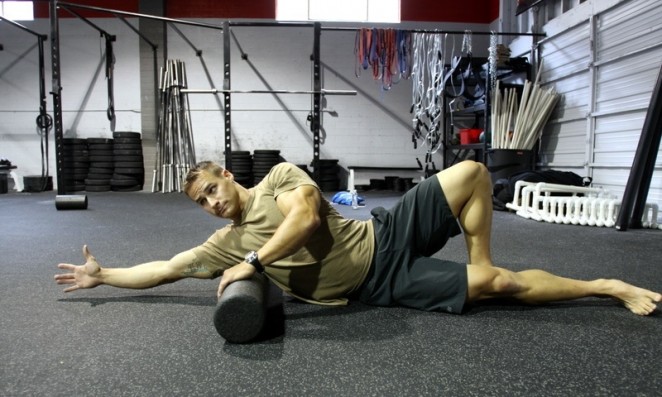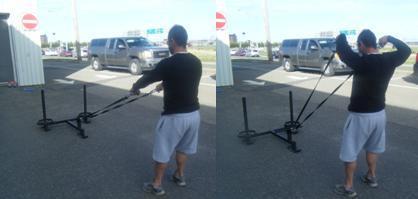I’ve gotten lots of questions regarding recovery lately, so I want to go into detail today covering the topic.
Why
No matter who you are or what you do, an athlete’s body will accumulate muscular fatigue, knots, and adhesions to go along with lactic acid buildup, adrenal distress, and many other symptoms of wear and tear. This in inevitable if you participate in sports or the iron game. Like an automobile, the more you perform routine maintenance work, the longer the machine will last and the better it will perform. But you know this already…you want to learn more about that routine maintenance work don’t you?
How
[spacer size=”20″]Here are a few of my favorite recovery methods: foam roller, lax ball, dynamic warmup, stretching, massage and even low intensity eccentric-less movements.
[spacer size=”20″]
Foam rolling has become a very popular method of self-myofascial release. The muscles in our bodies are encased in a sheath called fascia, much like sausage stuffed in a casing. Inside those casings our muscle fibers slide over each other when they flex and extend and our strength training cause microtrauma (tears) within those fibers. So we develop knots, adhesions, and tightness along those fibers and fascia. Foam rolling is a way to break-up and remove those knots that inhibit proper muscle functioning while loosening up the fascial compartments to allow more room for movement and growth! The back, glutes, hips, hamstrings, quads, IT bands, and calves are great places to foam roll.
[spacer size=”20″]

Tennis balls and Lacrosse balls are also great for a more pinpoint approach to self-myofascial release. The shoulders, pecs, arms, upper back, hips, calves and even the bottom of the feet (plantar fascia) are great places to use these balls.
[spacer size=”20″]
Dynamic Warmups should be performed before any training session. These warmups are designed to prepare the body for the work it is about to do. They can also be strategically planned to incorporate mobility and pre-hab work simultaneously. For example, bird dogs and fire hydrants are great hip and low back openers that can be performed to increase mobility and strengthen stabilizer muscles before a lower body session.
[spacer size=”20″]
HERE is a video of my dynamic warmup, foam rolling, and lax ball stuff. The file was too large to post on this page, so check it out on YouTube. And make sure to subscribe to my channel while you’re there!
[spacer size=”20″]
Stretching should always be performed on warm muscles that are full of blood to prevent tears. Start with gentle stretches and progress from there. Some athletes, like bodybuilders like to stretch during a training session. This is fine, but most others should hold off until after the session is completed to stretch.
[spacer size=”20″]
Massage is a great way to release tension, relax, and even correct structural issues. ART, needling, shiatsu and other more aggresive forms of massage can do wonders to release tight or restricted joints and muscles. Frequency of treatment will depend on one’s budget as massage is great, but it can be expensive. ART, needling and shiatsu are less relaxing, but the end result is well worth the temporary pain. Side note: Temporary pain is usually a prerequisite for lasting success!
[spacer size=”20″]
Eccentric-less exercise is a form of recovery that I learned from Christian Thibadeau at T-nation. Using a sled or Prowler attached to a TRX, Blast Straps, or rings, you perform movements designed to flush a muscle with blood and nutrients to facilitate recovery. Since there is no negative portion of these movements, fatigue or further muscle damage is minimal and the extra blood and nutrients flush toxins, lactic acid, and soreness away! These can be used the day after a tough training session or even in-season for athletes as a way to maintain strength and size without accumulating excess fatigue.
[spacer size=”20″]

Did I leave anything out? Have questions? Let’s hear your thoughts below!!